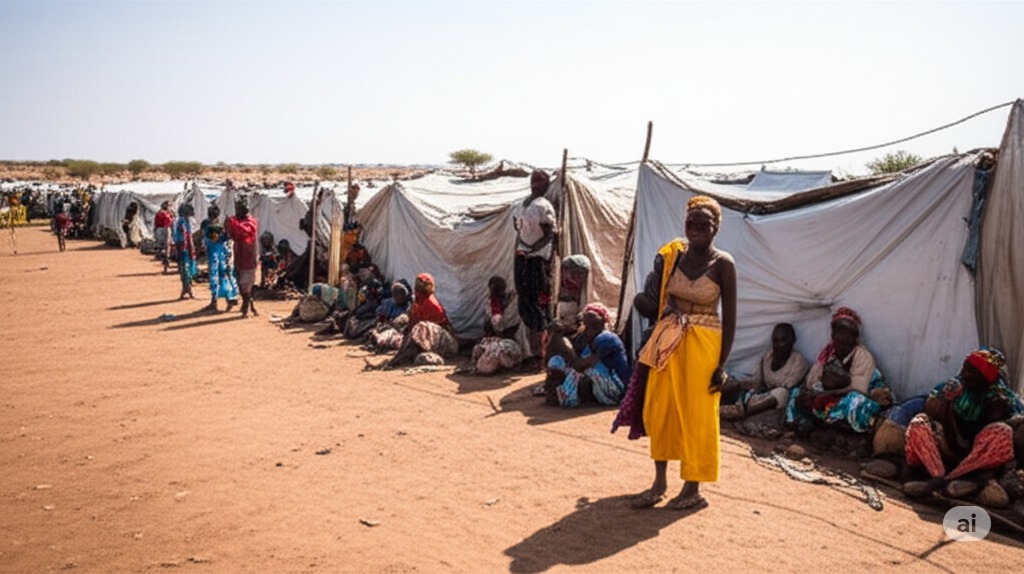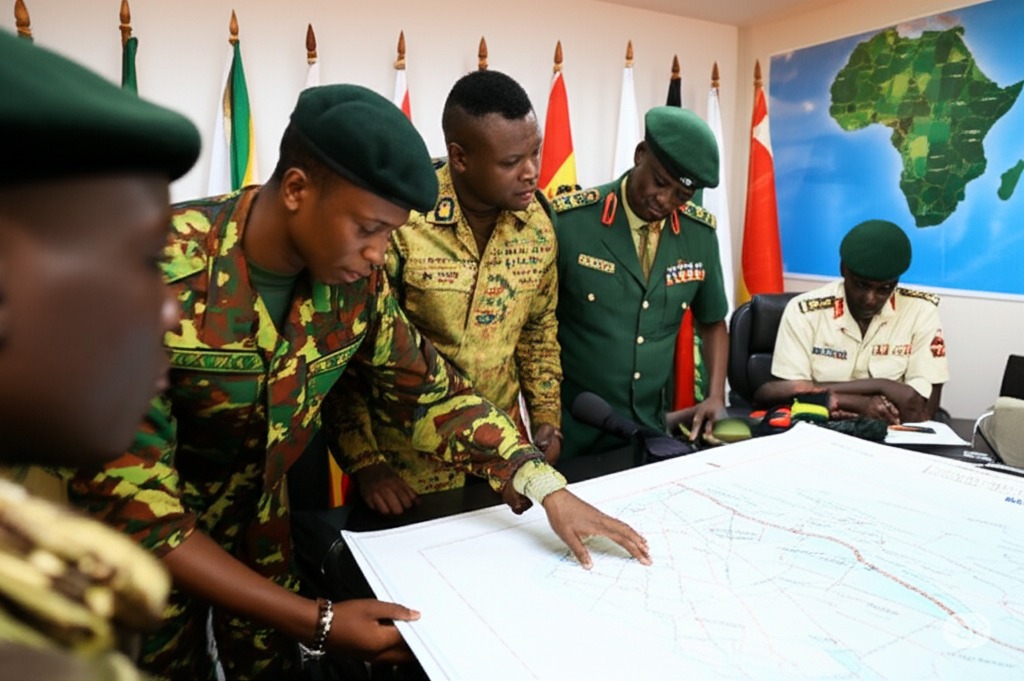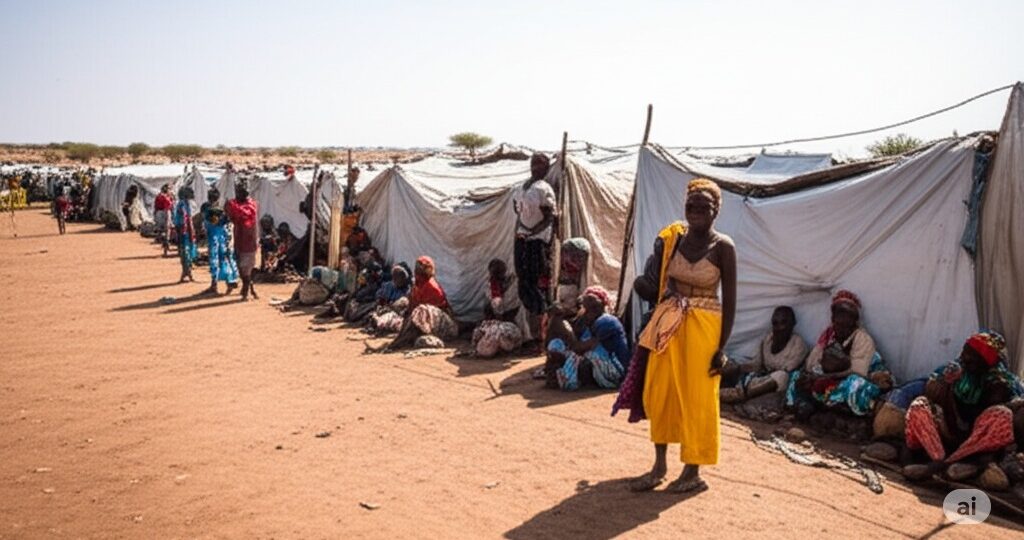The dawn of the 21st century has seen the rise of complex, interconnected security challenges, with extremist groups posing a persistent and evolving threat across various vulnerable regions. From the vast, arid expanses of the Sahel to the strategic maritime routes of East Africa and the resource-rich northern territories of Mozambique, the fight against these non-state actors is a defining struggle of our time.
These conflicts are not merely isolated skirmishes; they are deeply entwined with pre-existing socio-economic grievances, governance deficits, climate change impacts, and historical marginalization, creating volatile environments ripe for exploitation by groups propagating violent ideologies.
This article delves into the intricate web of regional security challenges, focusing specifically on the Sahel, East Africa, and Mozambique. It will examine the dynamics of the ongoing fight against extremist groups, the critical role and inherent difficulties of cross-border security cooperation, the devastating humanitarian crises exacerbated by these conflicts, and critically assess the effectiveness of current security approaches. Understanding these multifaceted issues is paramount to developing sustainable and effective strategies that transcend purely military responses, fostering long-term stability, and protecting civilian populations.
The Evolving Threat Landscape: A Transnational Menace
Extremist groups operating in these regions – such as Al-Shabaab in East Africa, Jama’at Nusrat al-Islam wa al-Muslimin (JNIM) and Islamic State in the Greater Sahara (ISGS) in the Sahel, and Ansar al-Sunna (often referred to as ISIS-Mozambique) in Cabo Delgado – are not monolithic entities. They are adaptable, often decentralized, and adept at exploiting local grievances, historical injustices, and state fragilities. Their tactics range from sophisticated asymmetric warfare and complex attacks to brutal intimidation of local populations and control over illicit economies.
Crucially, these groups operate with a transnational outlook, transcending national borders in terms of ideology, financing, recruitment, and operational reach. This cross-border fluidity allows them to evade state security forces, establish safe havens, and spread their influence, making isolated national counter-terrorism efforts inherently insufficient. The interconnectedness of these threats necessitates a paradigm shift towards comprehensive regional and international cooperation, recognizing that an attack in one country can have ripple effects across an entire sub-continent.
Case Study 1: The Sahel – A Region Under Siege
The Sahel, a vast semi-arid belt stretching across North Africa, has become a global epicenter of violent extremism. Countries like Mali, Burkina Faso, and Niger bear the brunt of an escalating insurgency driven primarily by JNIM (an Al-Qaeda affiliate) and ISGS (an ISIS affiliate), with Boko Haram remnants also posing a threat further south, particularly around the Lake Chad Basin.
Challenges:
- Vast, Porous Borders: The sheer size and lack of state control over large swathes of territory make border management and interdiction incredibly difficult.
- Weak Governance & State Presence: Many areas lack basic services, justice systems, and effective security forces, creating a vacuum that extremist groups exploit to offer alternative governance or protection.
- Socio-Economic Grievances: Poverty, unemployment, lack of education, ethnic marginalization, and perceptions of state corruption fuel recruitment.
- Climate Change: Desertification and resource scarcity exacerbate inter-communal conflicts, which extremists then manipulate.
- Political Instability: A series of coups in Mali, Burkina Faso, and Niger have further destabilized the region, disrupting counter-terrorism efforts and straining international partnerships.
Counter-Terrorism Efforts:
- G5 Sahel Joint Force: Comprising forces from Burkina Faso, Chad, Mali, Mauritania, and Niger, established to coordinate military efforts across borders.
- French Operation Barkhane (now scaled down): Provided crucial air support, intelligence, and special forces capabilities to regional armies.
- MINUSMA (UN Multidimensional Integrated Stabilization Mission in Mali): The deadliest UN peacekeeping mission, facing severe challenges in protecting civilians and stabilizing the country.
- Bilateral and Multilateral Support: Training, equipment, and intelligence sharing from the US, EU, and other partners.
Effectiveness & Critiques:
Despite significant military investment, the security situation in the Sahel has deteriorated. Military-centric approaches have struggled to contain the spread of violence, often leading to human rights abuses that further alienate local populations. The G5 Sahel force has faced significant operational, logistical, and funding challenges, compounded by political instability and mistrust among member states. The withdrawal of French forces and UN peacekeeping missions from some areas has created a void that extremist groups are quick to fill, highlighting the limitations of external military interventions without robust local governance and development initiatives.
Humanitarian Impact:
The conflict has triggered a severe humanitarian crisis. Millions have been displaced from their homes, fleeing violence and insecurity. Access to food, water, healthcare, and education is severely restricted. Extremist groups deliberately target schools and health facilities, exacerbating an already dire situation. Humanitarian aid delivery is frequently hampered by insecurity, attacks on aid convoys, and widespread blockades by armed groups.
Case Study 2: East Africa – The Enduring Threat of Al-Shabaab
In East Africa, the primary security concern emanates from Al-Shabaab, an Al-Qaeda affiliate that has leveraged Somalia’s protracted instability to establish a formidable presence. While primarily based in Somalia, Al-Shabaab routinely conducts cross-border attacks into Kenya and other neighboring countries, posing a serious threat to regional stability and international shipping lanes.

Challenges:
- Somalia’s Fragility: Decades of conflict, weak central government, and clan-based politics provide fertile ground for Al-Shabaab’s operations.
- Maritime Security: Al-Shabaab’s reach extends to coastal areas, posing potential threats to vital shipping routes in the Gulf of Aden and Indian Ocean.
- Regional Spillover: Recurrent attacks in Kenya, Ethiopia, and Uganda demonstrate the group’s intent and capability to project power beyond Somalia.
- Recruitment: Exploitation of grievances related to unemployment, political marginalization, and a narrative of defending Islam against foreign intervention.
Counter-Terrorism Efforts:
- AMISOM/ATMIS (African Union Transition Mission in Somalia): A multinational force comprising troops from Uganda, Burundi, Kenya, Ethiopia, and Djibouti, which has been central to pushing Al-Shabaab out of major urban centers and supporting the Somali government.
- US and Allied Support: Drone strikes, special forces operations, and training for Somali national army (SNA) and regional forces.
- National Efforts: Kenya has deployed troops as part of ATMIS and conducts its own counter-terrorism operations. Ethiopia has also maintained a significant presence in Somalia.
Effectiveness & Critiques:
ATMIS has achieved significant tactical successes, dislodging Al-Shabaab from key strongholds. However, the group retains significant operational capabilities, particularly in rural areas, and continues to launch devastating attacks, including complex assaults on hotels, government buildings, and civilian targets. The long-term sustainability of ATMIS, its exit strategy, and the capacity of the SNA to assume full security responsibilities remain critical challenges. The reliance on external military solutions has not fully addressed the underlying issues of governance, justice, and reconciliation needed to undercut Al-Shabaab’s appeal.
Humanitarian Impact:
East Africa is prone to recurring droughts and food insecurity, and the conflict exacerbates these vulnerabilities. Al-Shabaab’s control over certain areas restricts humanitarian access, leading to widespread displacement and famine-like conditions. Attacks on aid workers and infrastructure further complicate efforts to deliver life-saving assistance to millions in need.
Case Study 3: Mozambique – The Emergence of a New Front
Northern Mozambique, particularly Cabo Delgado province, has witnessed a brutal insurgency since 2017 by Ansar al-Sunna, locally known as Al-Shabaab, which pledged allegiance to ISIS in 2019. This conflict, initially driven by local grievances, has escalated rapidly, threatening major liquefied natural gas (LNG) projects and regional stability.
Challenges:
- Local Grievances: Poverty, unemployment, perceptions of elite capture of natural resources, and socio-economic marginalization fuel discontent.
- State Absence: Limited state presence and public services in many parts of Cabo Delgado allowed the insurgency to take root.
- Brutal Tactics: The group employs extreme violence, including beheadings and mass killings, to terrorize populations and assert control.
- Resource Curse: The discovery of vast gas reserves has paradoxically contributed to instability, raising local expectations while creating new fault lines.
Counter-Terrorism Efforts:
- SADC Mission in Mozambique (SAMIM): Deployed by the Southern African Development Community (SADC) in 2021, with troops from South Africa, Botswana, Lesotho, Angola, Tanzania, and Zambia.
- Rwandan Security Forces: Rwanda deployed a highly effective contingent of troops to Cabo Delgado in 2021, which has played a crucial role in reclaiming significant territory.
- Mozambican Armed Forces (FADM): With support and training from various international partners.
Effectiveness & Critiques:
The deployment of Rwandan and SADC forces has significantly improved the security situation in Cabo Delgado, pushing insurgents out of key towns and strategic locations, including the LNG project sites. There have been clear tactical victories. However, the insurgency is far from over. Insurgents have adapted, fragmenting into smaller cells and resorting to guerrilla tactics, continuing to terrorize rural communities. The long-term sustainability of the foreign troop presence and the capacity of the FADM to hold and secure reclaimed areas without external assistance remain major concerns. Furthermore, addressing the root causes of the insurgency – including poverty, youth unemployment, and governance issues – is vital to prevent its resurgence.
Humanitarian Impact:
The conflict in Cabo Delgado has displaced over a million people, creating one of Africa’s fastest-growing humanitarian crises. Mass atrocities, including widespread killings, abductions, and destruction of property, have forced communities to flee. Access to food, shelter, and medical care is critical for the displaced, many of whom rely entirely on humanitarian assistance.
Cross-Border Security Cooperation: A Cornerstone, Yet Challenged
The transnational nature of extremist threats inherently necessitates robust cross-border security cooperation. No single nation can effectively combat groups that exploit porous borders for movement, training, financing, and recruitment.
Mechanisms and Importance:
- Intelligence Sharing: Crucial for tracking movements, identifying threats, and pre-empting attacks.
- Joint Operations: Coordinated military and law enforcement actions across borders to dismantle networks and pursue fleeing militants.
- Regional Forces: Initiatives like the G5 Sahel Joint Force, AMISOM/ATMIS, and SAMIM are designed to pool resources and coordinate efforts.
- Capacity Building: International partners provide training, equipment, and logistical support to enhance national and regional security forces.
Challenges to Effective Cooperation:
- Lack of Trust: Historical rivalries, differing national interests, and suspicions between neighboring countries can hinder intelligence sharing and joint planning.
- Capacity Gaps: Disparities in military capabilities, equipment, and training among cooperating nations can create operational inefficiencies.
- Funding and Logistics: Regional initiatives often suffer from insufficient and unreliable funding, impacting their operational effectiveness.
- Legal and Political Frameworks: Harmonizing legal frameworks for hot pursuit, extradition, and intelligence sharing across sovereign borders can be complex.
- Corruption: Corruption within security forces can undermine efforts, allowing militants to evade capture or secure resources.
Despite these challenges, the examples of SAMIM and the Rwandan deployment in Mozambique highlight that strong political will, combined with effective external support and clear objectives, can yield positive results in containing an insurgency. However, these successes are often tactical and require comprehensive follow-up to be sustainable.
The Human Cost: Humanitarian Crises and Displacement
Beyond the direct violence, regional conflicts fueled by extremist groups inflict immense human suffering, triggering complex and protracted humanitarian crises.

Key Impacts:
- Mass Displacement: Millions are forced to flee their homes, becoming internally displaced persons (IDPs) or refugees in neighboring countries. They face desperate conditions in overcrowded camps or host communities, lacking basic necessities.
- Food Insecurity and Famine: Conflict disrupts agricultural production, supply chains, and market access, leading to severe food shortages. Extremist groups often use hunger as a weapon, exacerbating famine conditions.
- Health Crises: Destruction of health infrastructure, lack of access to medical care, and poor sanitation in displacement camps lead to outbreaks of preventable diseases.
- Education Disruption: Schools are often targeted or closed, depriving entire generations of access to education, further entrenching cycles of poverty and vulnerability.
- Protection Concerns: Civilians are vulnerable to atrocities, including extrajudicial killings, sexual violence, child recruitment, and forced displacement.
- Hindered Humanitarian Access: Insecurity, attacks on aid workers, bureaucratic impediments, and active blockades by armed groups severely limit the ability of humanitarian organizations to reach those in need.
The nexus between security and humanitarian concerns is undeniable. Military operations, while aiming to restore security, can inadvertently create new humanitarian needs if not carefully planned and executed with civilian protection as a priority. Conversely, without improved security, humanitarian efforts face insurmountable challenges. A truly effective response requires integrated approaches that bridge humanitarian aid, development, and peacebuilding efforts.
Assessing the Effectiveness of Current Security Approaches
Current counter-terrorism efforts, largely characterized by military-led operations, have yielded mixed results across the Sahel, East Africa, and Mozambique.
Strengths:
- Degradation of Capabilities: Military pressure can degrade extremist groups’ operational capabilities, disrupt their command structures, and limit their freedom of movement.
- Reclaiming Territory: Joint operations have successfully pushed groups out of major urban centers and strategic areas.
- Protection of Key Infrastructure: Security forces have, in many instances, been successful in protecting vital national assets and infrastructure.
Limitations and Critiques:
- Military-First Bias: An over-reliance on kinetic military solutions often neglects the underlying socio-economic and governance deficits that fuel extremism.
- Failure to Address Root Causes: Without addressing poverty, injustice, marginalization, and lack of opportunities, military victories can be fleeting.
- Human Rights Abuses: Instances of abuses by state security forces can alienate local populations, erode trust, and inadvertently drive new recruits into the arms of extremist groups.
- “Whack-a-Mole” Effect: Pushing groups out of one area often leads them to relocate to another, adapting their tactics and expanding their reach.
- Sustainability Challenges: External military support is often finite, and the capacity of national forces to sustain gains independently remains a major challenge.
- Limited Impact on Ideology: Military operations alone cannot counter the ideological appeal of extremism; this requires parallel efforts in education, communication, and community engagement.
The persistent nature of the threat underscores that a purely military approach is insufficient. True security cannot be imposed; it must be built on a foundation of trust, justice, and opportunity.

Towards a Holistic and Sustainable Strategy
Addressing regional security challenges and achieving lasting counter-terrorism success requires a paradigm shift towards comprehensive, multi-dimensional, and locally-led strategies.
- Beyond Military Solutions: While military action is necessary to contain immediate threats, it must be part of a broader strategy that includes:
- Good Governance: Strengthening democratic institutions, promoting transparency, combating corruption, and ensuring equitable resource distribution.
- Rule of Law and Justice: Establishing fair and accessible justice systems that uphold human rights and address grievances.
- Socio-Economic Development: Investing in education, healthcare, infrastructure, and job creation, particularly for youth, to provide alternatives to extremism.
- Climate Resilience: Addressing the impacts of climate change, which exacerbate resource scarcity and inter-communal conflict.
- Community Engagement and Local Ownership:
- Countering Violent Extremism (CVE): Developing community-based programs that challenge extremist narratives, promote tolerance, and build resilience.
- Trust-Building: Fostering positive relationships between security forces and local populations through respectful engagement and accountability.
- Empowering Local Leaders: Supporting traditional and religious leaders, women, and youth in peacebuilding and conflict resolution efforts.
- Strengthening Cross-Border Cooperation and Regional Institutions:
- Enhanced Intelligence Sharing: Building secure and trusted channels for real-time intelligence exchange.
- Coordinated Law Enforcement: Joint investigations, border patrols, and operations to disrupt illicit financial flows and arms trafficking.
- Regional Capacities: Investing in and empowering regional bodies like the AU, ECOWAS, and SADC to lead security initiatives, with sustained international support.
- Upholding Human Rights and International Humanitarian Law:
- Accountability: Ensuring that all security forces are held accountable for human rights violations, which is crucial for legitimacy and gaining public trust.
- Civilian Protection: Prioritizing the protection of civilians in all operations and ensuring humanitarian access.
- Adaptive and Context-Specific Approaches:
- Recognizing that each region and even sub-region has unique dynamics, requiring tailored strategies rather than one-size-fits-all solutions.
- Continuously assessing and adapting strategies based on evolving threats and local realities.
The Path to Durable Peace
The ongoing fight against extremist groups in the Sahel, East Africa, and Mozambique represents a formidable challenge to regional and global security. The interconnectedness of these threats, the devastating humanitarian consequences, and the limitations of traditional security approaches underscore the urgent need for a more comprehensive and nuanced response.
While military pressure remains a necessary component to degrade immediate threats, lasting peace and stability will only be achieved by addressing the root causes of vulnerability and grievance. This requires a profound commitment to good governance, inclusive development, social justice, and robust regional cooperation, all underpinned by respect for human rights and local ownership. The future of regional security hinges on the ability of national governments, regional organizations, and international partners to forge truly integrated strategies that move beyond borders and military solutions, ultimately investing in the resilience and well-being of the affected populations. Only then can the shadow of extremism truly begin to recede, paving the way for durable peace and sustainable development.

